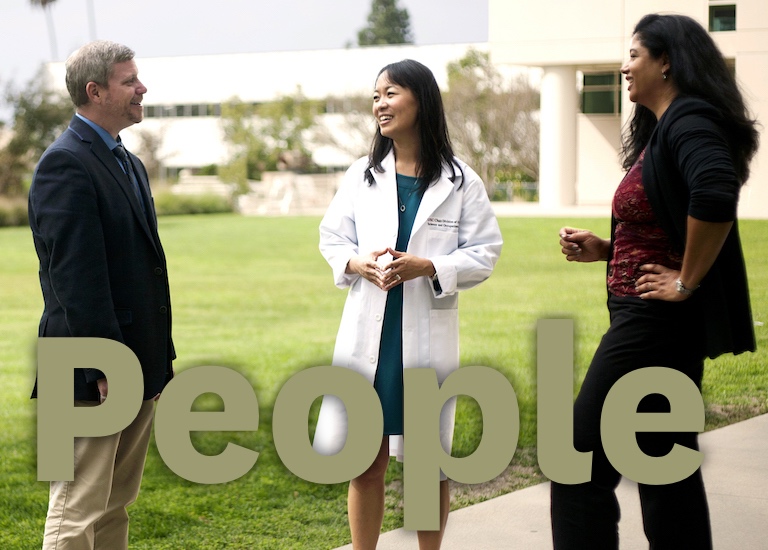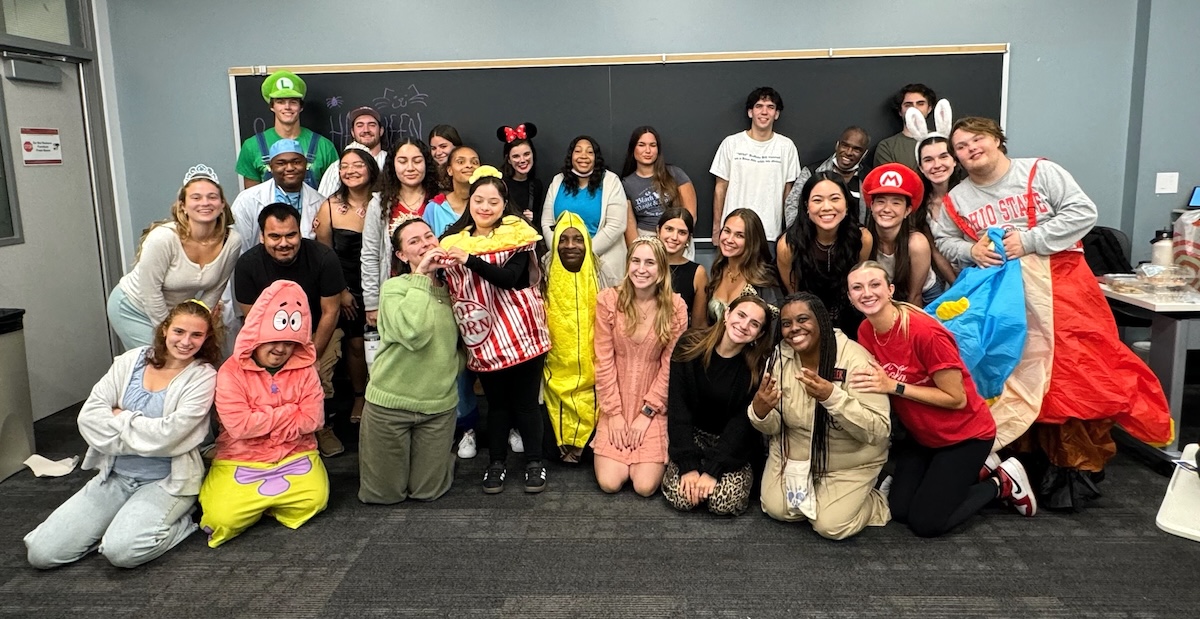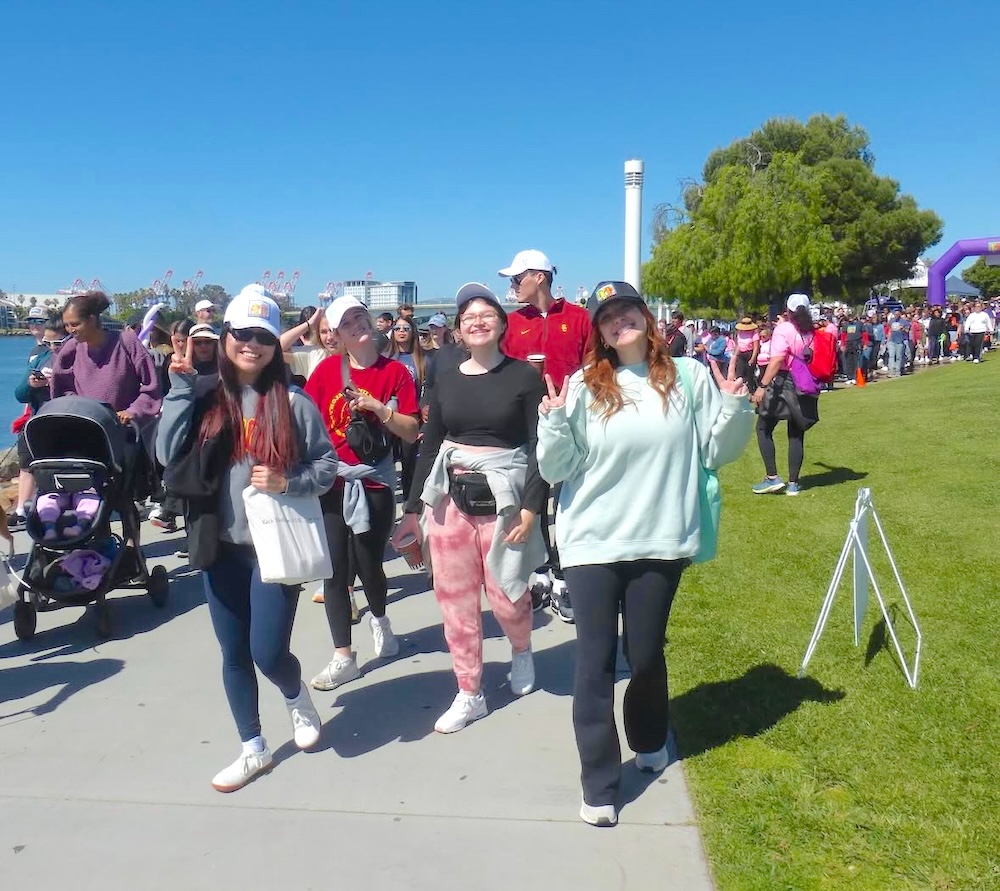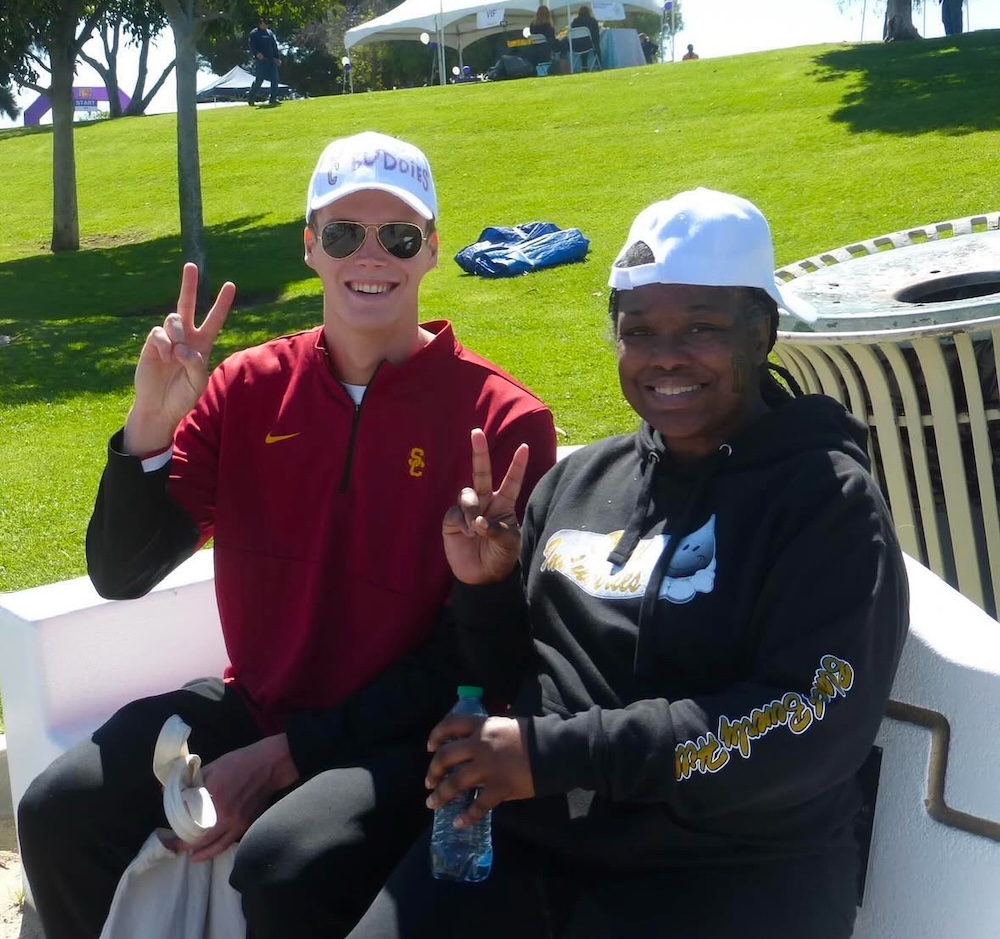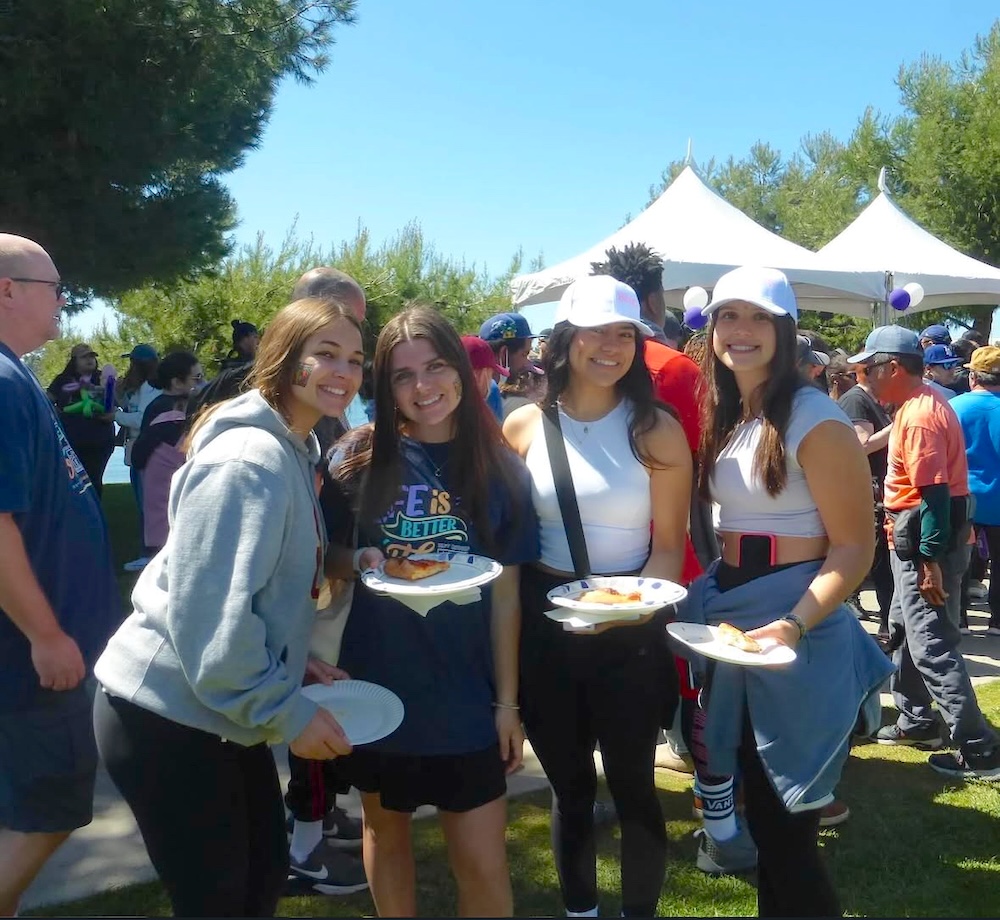Student Blog
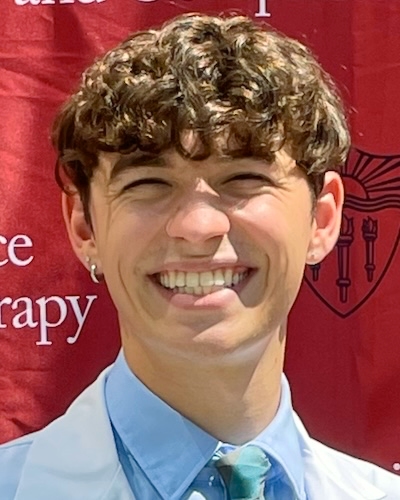
Expanded Horizons, Open Ambitions ⟩
February 27, 2025, by Mason
Beginnings and Endings Fieldwork
In occupational therapy school, students have the opportunity to take part in a plethora of fieldwork experiences, and students engage in both level 1 and level 2 fieldwork. Uniquely here at USC Chan, level 1 fieldwork is integrated within the 4 practice immersions in which students learn: Adult Physical Rehabilitation, Mental Health, Pediatrics, and Geriatrics. In level 1 experiences, students have the opportunity to shadow clinicians and interprofessional teams out in their practice settings and gain valuable experience in interacting with the select patient population in which their current immersion is focusing. Level 2 fieldwork, on the other hand, takes students a step further. Rather than simply observing clinicians in practice, students begin the transition of becoming entry-level practitioners through hands-on clinical application and mentorship. By the end of a student’s level 2 fieldwork, they will have the skills and experience to enter the vast clinical landscape as a new practitioner.
This summer, I will take on the challenge of my first level 2 fieldwork experience. I was fortunate enough to be placed at an outpatient pediatric clinic where I will work full time 5 days a week for the entirety of the semester to gain the skills of an occupational therapy practitioner. I would be lying if I said I wasn’t nervous, but I am also beyond excited to begin this new chapter in my education. One unique component of my story is that I will be completing both of my level 2 fieldwork experiences Out-of-Area (OOA).
But what exactly is Out-of-Area (OOA) fieldwork? To answer that question, let me first give you a little background on how our standard system works. Students within the USC Chan’s occupational therapy program are all guaranteed to be placed in a fieldwork setting for both of their level 2 experiences. However, not all fieldwork sites are the same, and not all students take the standard path towards finding their fieldwork placements. Each year, USC Chan’s designated fieldwork coordinators work hard to curate a comprehensive fieldwork “wishlist” of clinical sites in Los Angeles and the surrounding area. Students have the opportunity to rank their preferences through an online portal and are eventually matched with a fieldwork site, where they then may have to interview to secure a placement.
However, if you are an avid out-of-state student like me, you may plan to return after you get your degree and also may want to conduct fieldwork a little closer to home or the area where you plan to lay your roots. That is exactly where Out-of-Area (OOA) fieldwork comes into play. In OOA fieldwork, students work closely with the fieldwork coordinators to locate, research, and connect with clinical sites in different states and even potentially internationally in different countries. Students have complete freedom to engage in fieldwork outside of LA, and when the time comes, USC Chan specifically offers virtual class options so that students may finish the entire last year of their degree remotely. OOA fieldwork does come with its own unique challenges. Rather than have a curated list of fieldwork sites already ready to accept a student, in OOA, students take on the burden themselves of researching & locating potential clinical sites where they would like to study. Moreover, even after a site is located and contacted, there is no guarantee that the site is interested or has the availability to take on a student.
Engaging in the search to find OOA opportunities for my level 2 fieldwork has certainly been time-consuming and stressful; however, for me, the benefits of these opportunities outweigh the additional work. What I love most about the OOA process is that it allows students like me to find fieldwork in the area they plan to practice after graduation. Fieldwork is not only a fantastic learning opportunity but also a strategic opportunity for networking and future employment. Many occupational therapy students get offered their first job post-grad from one of their fieldwork sites. Therefore, by conducting fieldwork where you call home, you are keeping yourself open to those possibilities and setting yourself up for a successful career post-graduation. Additionally, if you know me, you know I like saving money. Almost every decision I have made so far academically, professionally, and personally has been to set myself up for a successful financial future that aligns with my ambitions. The OOA process will enable me to move back home with my family for my entire last year and half of the graduate program. Of course, I am excited to be back with them, but in addition, this will save me all of the money I would have to spend on rent, and hopefully a little on food too. In graduate school, every penny counts, so when you are looking at your opportunities across any program, I would also recommend creating a plan for your ambitions and then working hard to make them a reality. You will certainly not regret it!
That’s all for now, and Fight On!
⋯
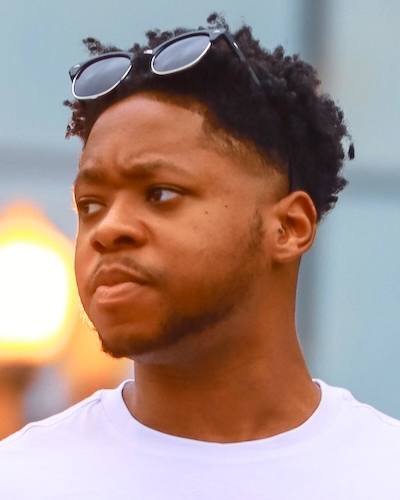
How I Learned To Effectively Communicate Boundaries as a Student & Future Clinician ⟩
February 24, 2025, by Jowy
Hey there! It’s Jowy Cenat.
I want to talk about something that’s been a total game-changer for me lately:
The power of saying no and communicating your needs effectively.
If you’re like me, it’s easy to get caught up in saying “yes” to everything because you don’t want to disappoint anyone or fall behind. But here’s the thing: learning to set boundaries has made me a better student, and it’ll make me a better clinician too.
So, if you’ve been struggling with how to say “no” without feeling guilty, or wondering how to communicate your limits, this post is for you. Here’s how I’ve learned to do it in a way that’s both respectful and kind — to others and to myself.
1. Know Your Limits First
This is the foundation of setting boundaries — you need to know where you stand. Before you can communicate your limits to others, you have to understand your own.
I used to say “yes” to everything — from extra projects to helping friends with everything under the sun. Eventually, I realized I was running on empty, and I wasn’t giving my best to anything.
Take a step back and figure out what your body and mind can handle at any given moment. Are you overwhelmed with coursework? Struggling to stay active?
Recognizing when you’re stretched too thin is the first step to saying no without feeling guilty.
2. Be Direct and Honest (Without Apologizing)
Here’s something I had to learn: You don’t have to apologize for saying no. Being honest and direct is actually the most respectful thing you can do. It’s not rude, and it’s certainly not selfish.
For example, instead of saying “I’m sorry, but I can’t help,” try:
- “I’m currently focusing on my studies, so I can’t take on any additional tasks.”
- “I’d love to help, but I really need to take care of myself right now.”
- “I’m at capacity at the moment, but I can check back in with you next week.”
You’re setting a clear boundary without feeling the need to justify yourself. And that’s okay!
3. Use “I” Statements
One of the most effective ways to communicate your boundaries is to use “I” statements. This helps you focus on your needs and makes it clear that it’s about your well-being, not about rejecting someone else.
Instead of saying, “You’re asking too much of me,” try:
- “I need to take a break to recharge.”
- “I’ve realized I need to prioritize my health right now.”
- “I’ve got a lot on my plate at the moment, so I can’t commit to this.”
4. Offer Alternatives When You Can
I know that sometimes you don’t want to just say no and walk away, especially if you still want to help. So, if you can, offer alternatives. This keeps the relationship positive and shows you care, but without overcommitting yourself.
For example:
- “I can’t meet this week, but I’m free next Tuesday — let’s schedule then.”
- “I’m tied up with coursework, but I know someone else who might be able to assist you.”
Offering alternatives shows that you’re still supportive, just not at the expense of your own time or energy.
5. Set Expectations Early
This one’s a biggie: be upfront about your availability. As a student, you’ll get a ton of requests — from study groups to social events.
Setting expectations early on helps people understand when you’re available and when you’re not.
For example, if you know you need weekends for studying or self-care, let your friends or classmates know ahead of time. That way, you’re not always scrambling to find a balance later on.
Setting and communicating boundaries doesn’t come naturally to everyone, but it’s one of the most important skills you can develop as a student and future clinician.
Saying no isn’t about being selfish; it’s about prioritizing your well-being, so you can show up as your best self especially for the people around you.
⋯
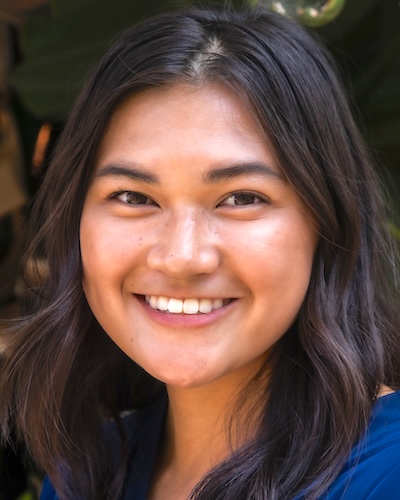
Food for Thought ⟩
February 21, 2025, by Cara
First, it started with cookies and cupcakes. Next, banana bread. Then a peach galette, lemon bars, pretzels, scones, more cookies, and bagels. Like many during the pandemic, the kitchen was my escape, using carb-heavy and sugary treats to detach my mind from the stress around me. Since then, baking has become my go-to form of self-care, and here’s why I think it should be yours too.
Baking provides a creative outlet
Whenever I’m baking, I can’t help but pretend I have my own Food Network show. Most of my creations turn out both edible and delicious, yet the process to that result isn’t always as seamless as the celebrity chefs make it look. But that’s what I love about baking — the unpredictability. Whether you follow the recipe exactly or not, no two outcomes are ever the same. From substituting ingredients to adding mix-ins or salvaging a failed dough — it all makes something uniquely yours. After all, perfection is overrated, and the most memorable treats are often the ones where we accept things as they are and allow ourselves to get a little messy along the way.
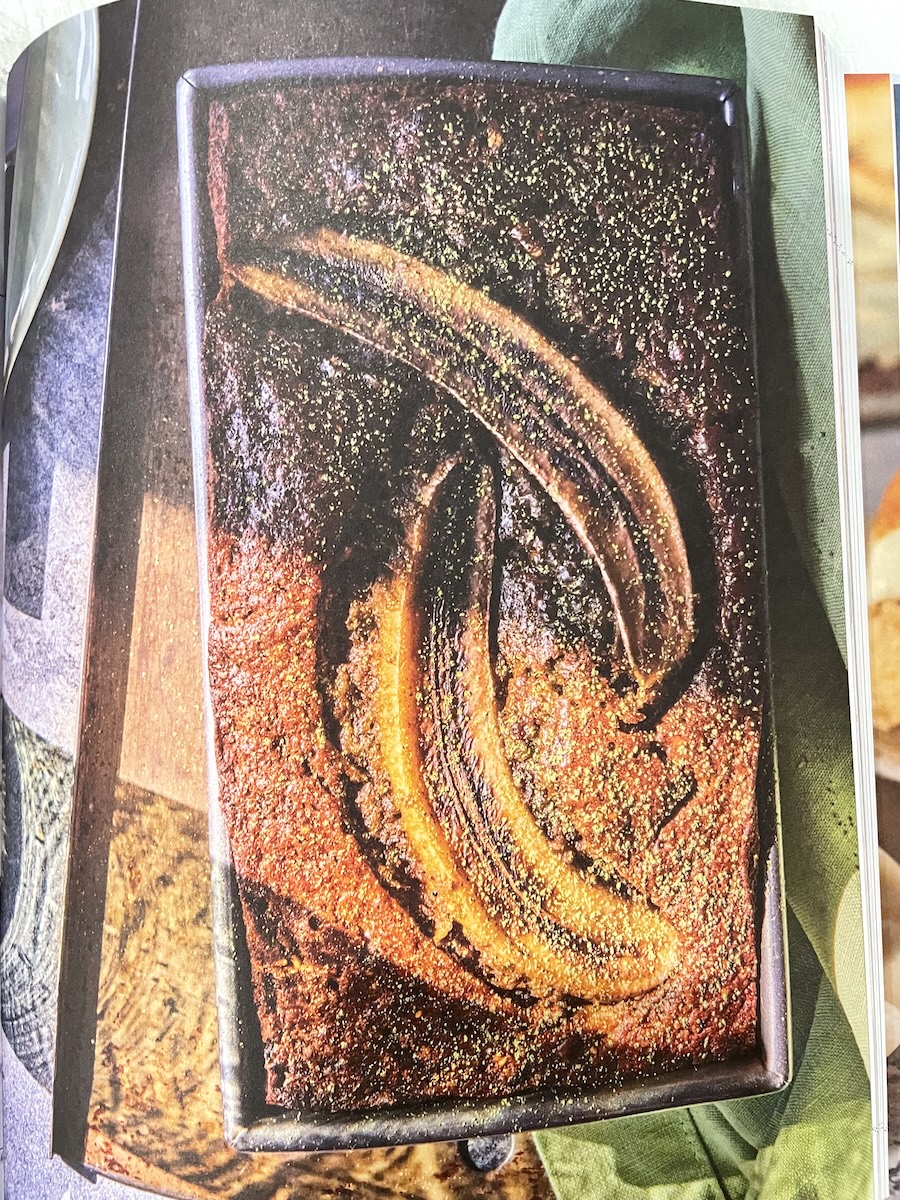
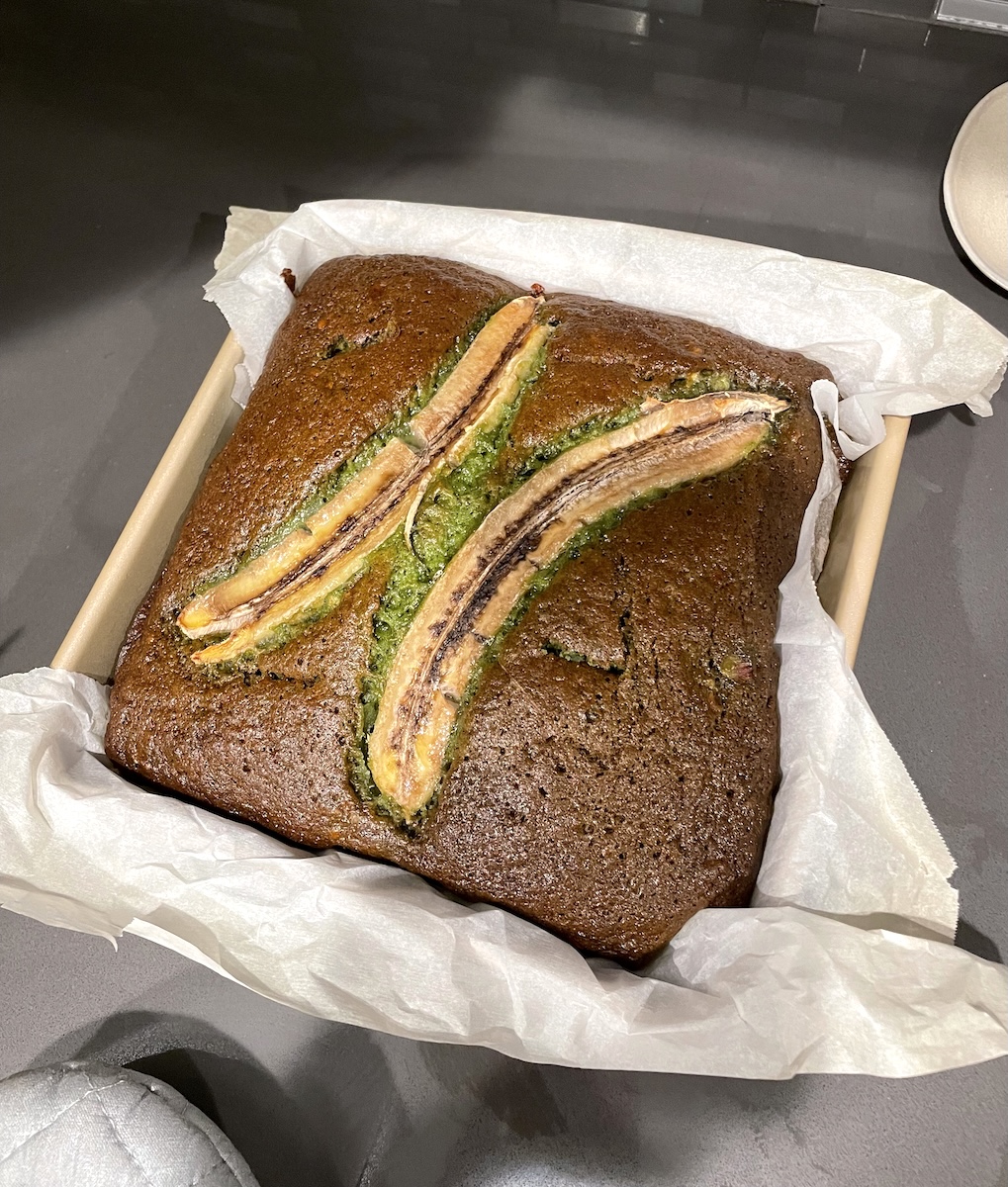
My recreation of matcha banana bread from the book, Mind Over Batter.
Baking promotes mindfulness for both yourself and others
We’ve all heard about the benefits of mindfulness — how it reduces stress and improves happiness. Baking provides those same benefits. It forces you to be present and attentive by engaging both your senses and body. For example, measuring or inhaling the lovely aroma as it bakes is therapeutic, encouraging you to not go through the motions to feel more connected to what you’re making. Additionally, consider how mixing the dough not only brings everything together, but also serves as an outlet to release frustration. I notice that my nerves and racing thoughts dissipate when I’m fully immersed in the recipe, and I feel a greater sense of peace and accomplishment when I see the final dish.
What also makes baking more restorative is that recipes are meant to be either baked together or shared with others. Everything I learned about baking, I learned from just being with my mom and grandma in the kitchen. I always enjoyed hearing how the recipes we made were a continuation of traditions. Moreover, no matter the occasion, dessert serves as the catalyst for connection. It’s comforting to connect with friends and family over something yummy while reminiscing about our days and sharing a few laughs. Plus, it’s all the more fun and rewarding when there’s a team challenge involved.

Our OS minor faculty tried decorating cake while unable to hear, see, or speak. Check out how they did!
Baking provides a sense of purpose
The heart of baking is giving. Whether it’s sharing something you made, recipes passed down through generations, or creating lasting memories.
In many cultures, food is the concrete manifestation of love. It’s not about expecting anything in return; it’s the sense of helping in some way. There’s an incredible satisfaction from seeing people enjoy the fruits of my labor, knowing it offers them comfort, uplift, or a sense of being appreciated. Simply put, making others feel good makes us feel good. As they say, “sharing is caring”, and that’s the kind of thing that strengthens our relationships, and, in turn, enhances our well-being.

Giant cookie to celebrate my friend getting into law school!
Here’s a few of my favorite recipes for when you’re feeling overwhelmed or looking for something new to try. Happy baking!
- Chocolate chip cookies, from Broma Bakery
- Thumbprint cookies, from Preppy Kitchen
You’ve Met Your (Banana) Matcha Loaf from Mind Over Batter
A whole book talking about baking as therapy! Jack Hazan, a psychotherapist and baker, shares recipes to support different needs — whether you’re feeling anxious, in need of connection, or practicing self-care. He also includes affirmations, mindfulness exercises, and baking tips. See the recipe below!

Reprinted from Mind Over Batter by Jack Hazan, © 2023. Published by Chronicle Books.
⋯
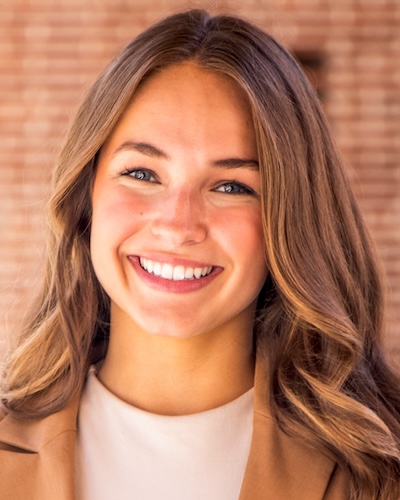
Looking to get involved? Check out one of my favorite clubs at USC ⟩
February 9, 2025, by Avery
When arriving at USC (as an undergraduate or graduate student), getting involved in student organizations can feel daunting and overwhelming. There are 100s to choose from — and attending meetings can feel intimidating or stressful to balance with the demands of a large school workload.
So . . . let me make it easy for you! If you are passionate about working with individuals with intellectual and developmental disabilities (as many OTs are), one of my favorite student organizations that I am a part of is the USC chapter of Best Buddies Club.
Best Buddies is an international nonprofit organization dedicated to creating opportunities for friendship, leadership development, and inclusion for individuals with intellectual and developmental disabilities (IDD). It operates through programs in schools, workplaces, and communities, fostering one-to-one friendships, job placements, and leadership training to promote social inclusion. It is very common in high schools across the country, but USC is lucky enough to have our own chapter!
Essentially, there are meetings every other week in which USC students socialize with adults with intellectual and developmental disabilities from Los Angeles for an hour. In the past we have done fun activities such as gingerbread house making, gone to basketball games, crafts, baked, and played board games.

Best Buddies club watching a USC women’s basketball game together

My buddy, Renard, gingerbread house making
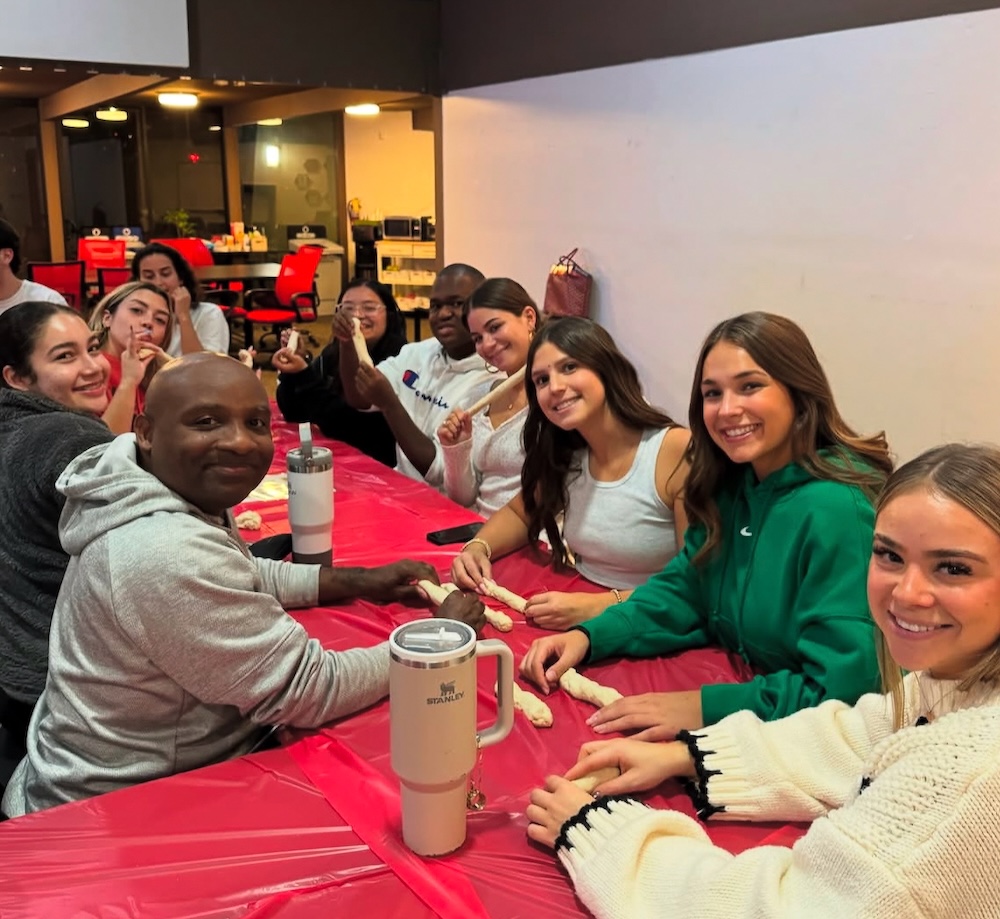
Baking together!
Last year we went to the Los Angeles Best Buddies friendship walk, where Best Buddies chapters come together from across the state to broaden friendships and to raise money for the Best Buddies organization. This event happens every April and was a highlight of my year.
Some pictures from last year’s friendship walk (click to enlarge)!
I absolutely love this club and recommend it for so many reasons.
Best Buddies is filled with occupational therapy students — both graduate and undergraduate — creating a vibrant, supportive community of future OTs, professionals in related fields, and genuinely kind, uplifting people. For anyone interested in careers in healthcare, education, occupational therapy, or social work, this club offers invaluable, hands-on experience working directly with individuals with intellectual and developmental disabilities (IDD). Beyond that, it’s an amazing opportunity to connect with passionate advocates and like-minded students who share the same dedication to inclusion and making a difference.
Best Buddies truly creates lasting friendships, and I find that everyone in the room is smiling for the full hour. I often text back and forth with my buddy in the time between meetings. By promoting inclusion and acceptance, this club directly contributes to creating a more inclusive community. You can truly see the difference you’re making in someone’s life — and they make a difference in yours!
Additionally, being a buddy is a relatively low commitment. One hour every two weeks is super easy to fit into my schedule as a busy student. Plus, joining is super easy — you just show up! When you arrive you get put on the members list, and you can then choose to have a one-on-one buddy pairing.

This is my buddy, Renard (dressed as a banana for our halloween party). We both love music, food and animals!
Check USC Best Buddies out on Instagram to learn more info and stay up to date on upcoming events.
If you have any questions at all, do not hesitate to reach out to me! We are always accepting new members, and would love to see your face at the next meeting!
⋯
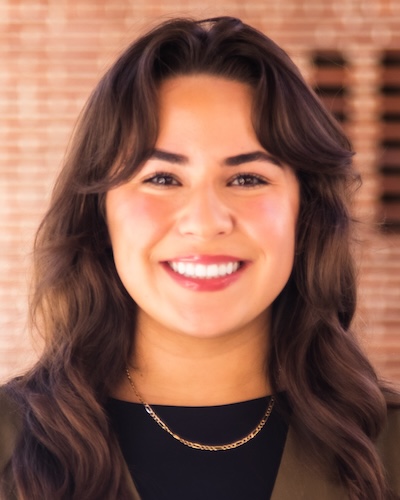
Learning and Traveling ⟩
February 6, 2025, by Kimberly Rochin
Getting Involved International
When I reflect on the standout moments from my time as an undergraduate, my two Maymester adventures immediately spring to mind. From soaking in breathtaking scenery to meeting some truly remarkable people, these journeys offered me a front-row seat to the diverse ways societies function and approach healthcare far beyond U.S. borders.
Exploring Argentina
During the summer of 2023, I enrolled in a Spanish course focusing on the immigration, history, and culture of Argentina. While exploring these themes, I was particularly struck by the local social dynamics. Buenos Aires is teeming with “third spaces” — museums, art galleries, and community centers that serve as social hubs. To my surprise, many of these spaces were free or had minimal cost for public entry.

Views in Argentina
As a tourist, I loved exploring these gems as they were a perfect fusion of how work and leisure intertwine. Another shocking factor was observing how shops and businesses often pause in the afternoon, allowing everyone to enjoy ‘merienda,’ a tea-time break shared with family and friends.

Merienda with my host family
Learning About Preventative Healthcare in Costa Rica
My journey continued this past summer in Nicoya, Costa Rica, where I participated in a Gerontology course examining the country’s famed “blue zones” — regions where people live significantly longer than the global average. Although I was not a fan of the mosquitoes and the occasional snake spotting in our hotel rooms, this experience helped me understand the power of preventative healthcare measures and a collectivist approach to well-being.
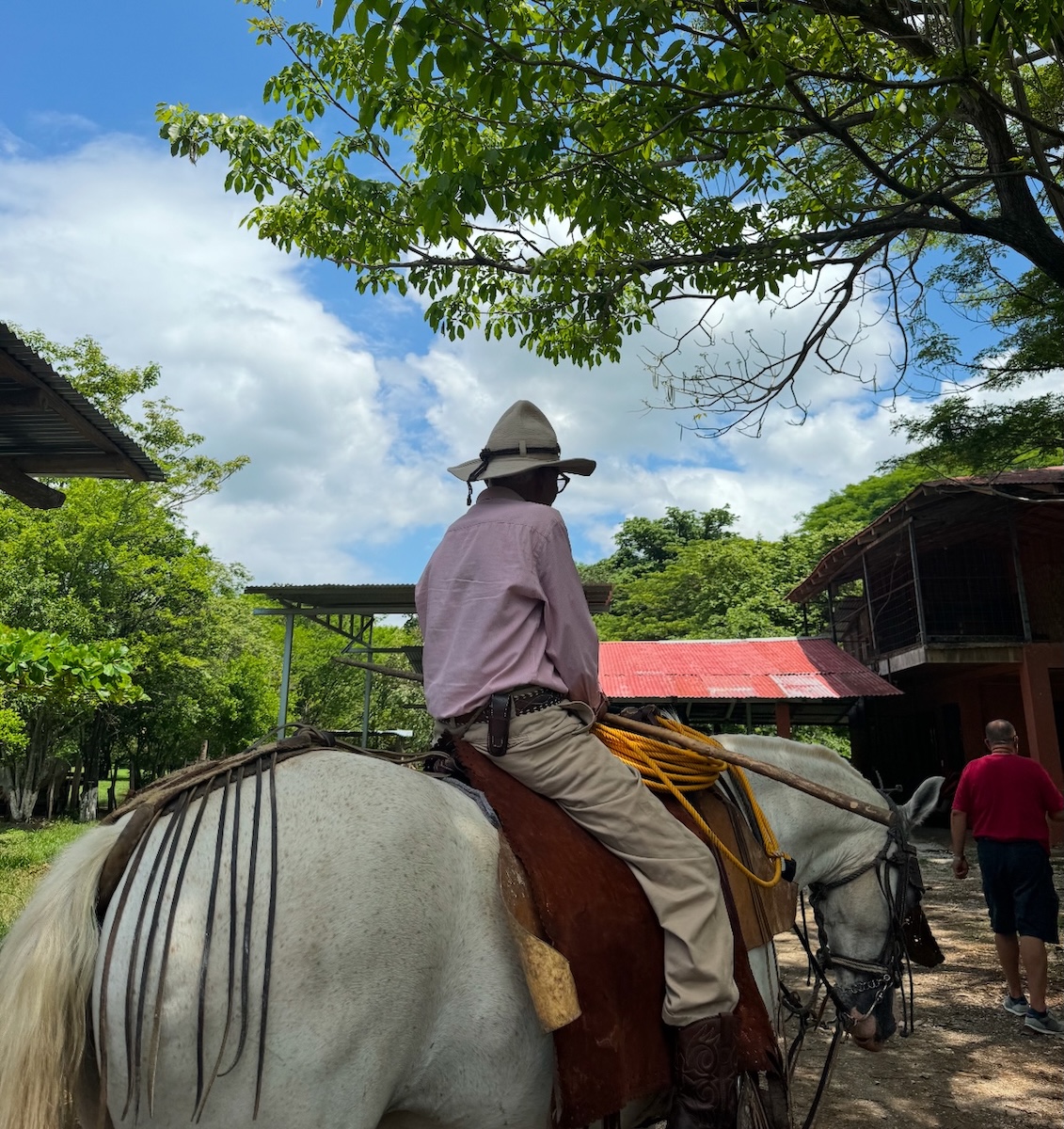
Meeting a centenarian man
In Costa Rica, the vibe is all about community and preventative health, a refreshing change from the more reactive healthcare models I’d seen in the U.S. It’s like they’re all about dodging the raindrops instead of waiting to get wet! This eye-opening experience really drove home the importance of weaving health-conscious choices into the fabric of everyday life. It’s a philosophy that meshes perfectly with the holistic spirit of occupational therapy.
So, what’s next?
Well, of course, I want to keep traveling! I mean, who doesn’t? As I continue my journey in occupational therapy, I am inspired to keep traveling and connecting the dots between cultural practices and health outcomes. Each trip offers new perspectives and strategies that can be adapted to enhance the therapeutic environments we create. By incorporating global insights into my studies and future practice, I aim to advocate for more integrative and culturally aware approaches to healthcare.
A piece of advice: if your undergraduate program offers a study abroad experience, even as short as a couple of weeks like mine, take advantage of them! It’s an invaluable opportunity to broaden your horizons and gain insights that you can’t get from a textbook.
⋯





